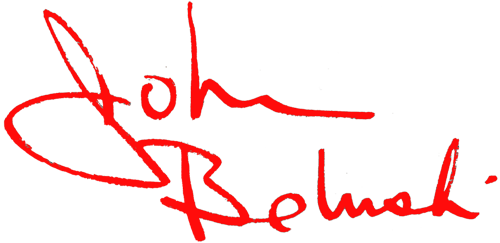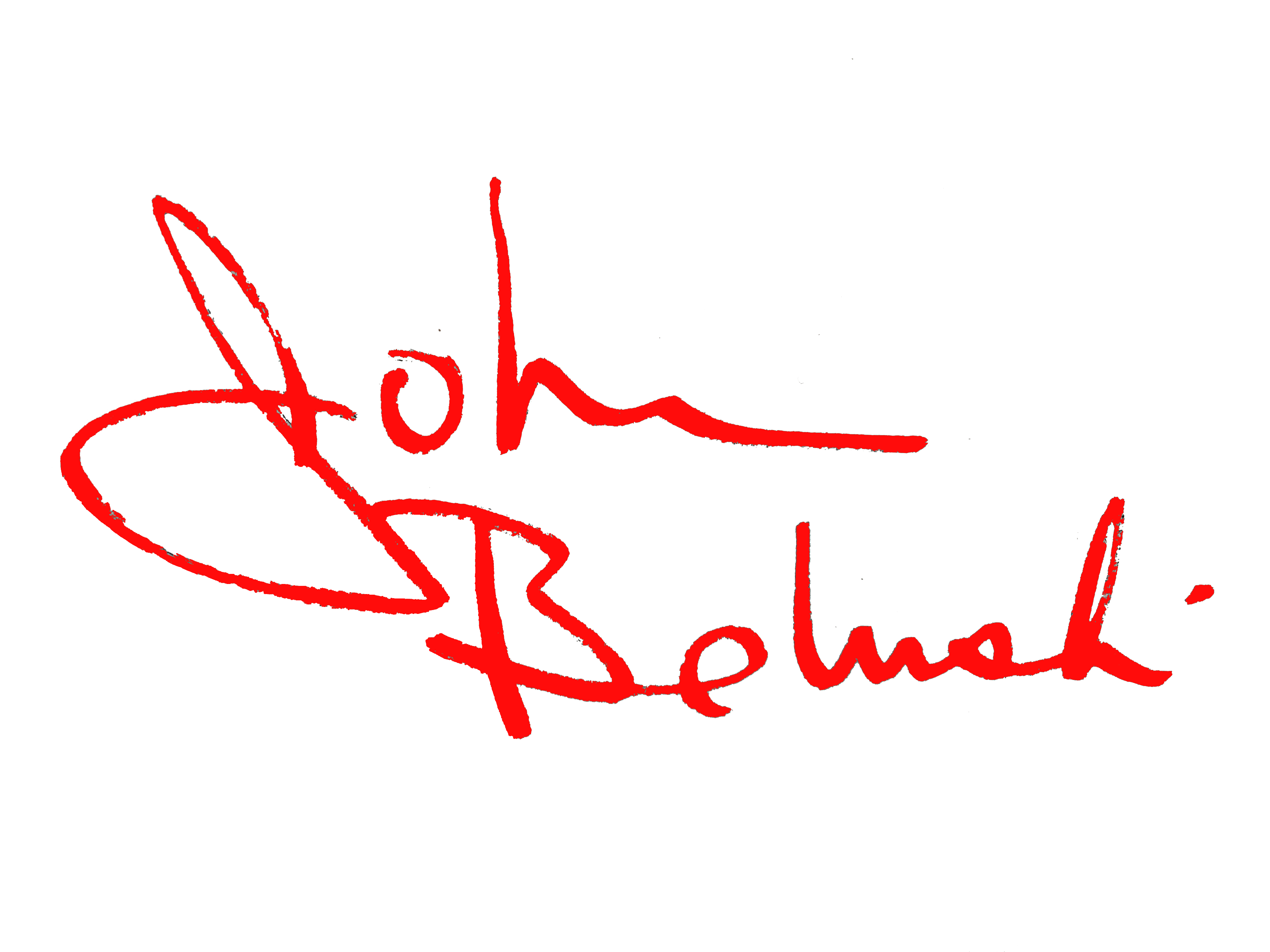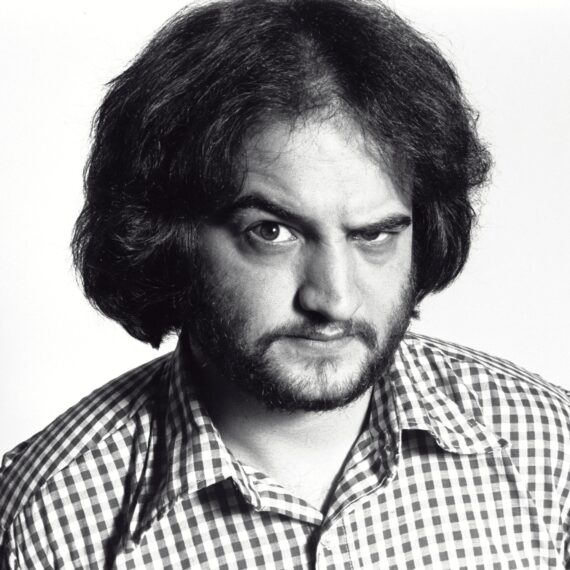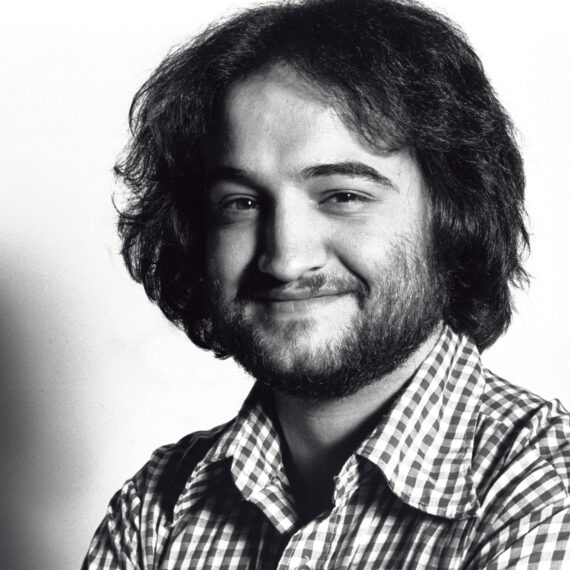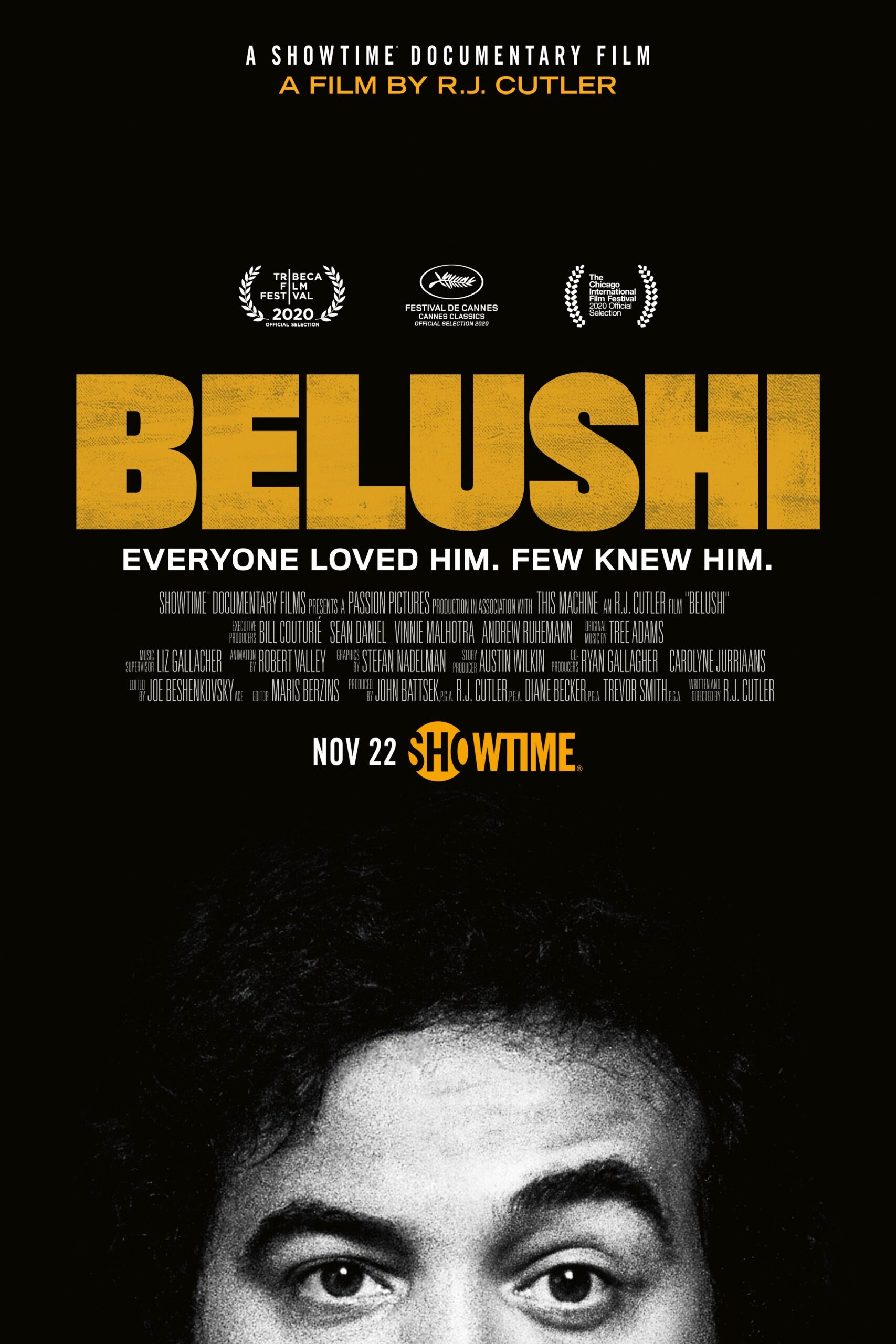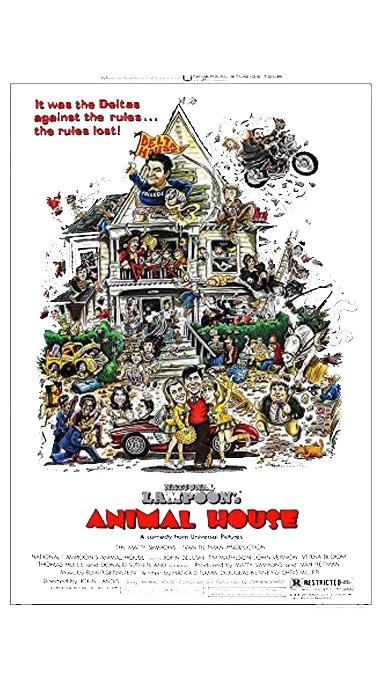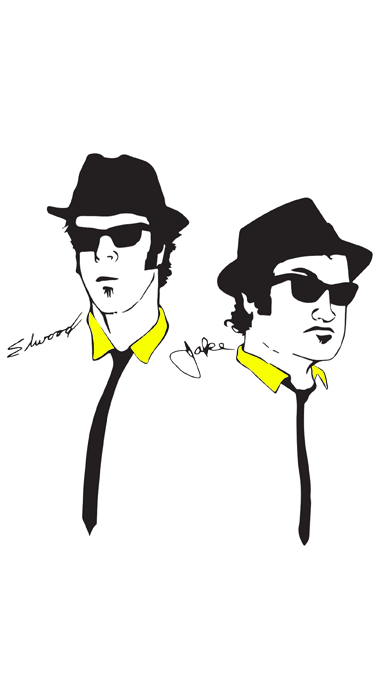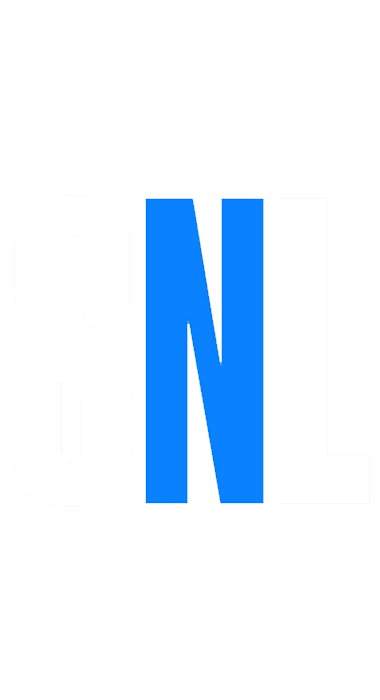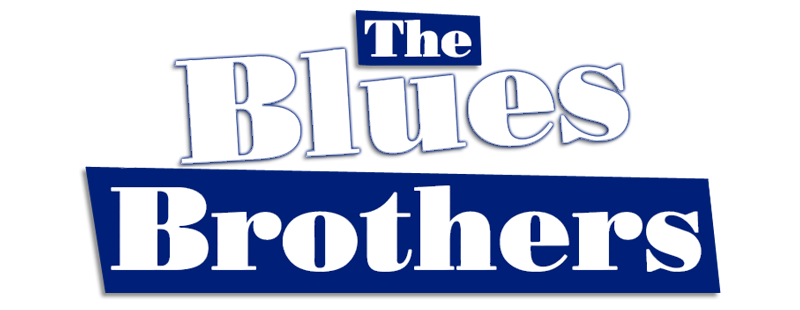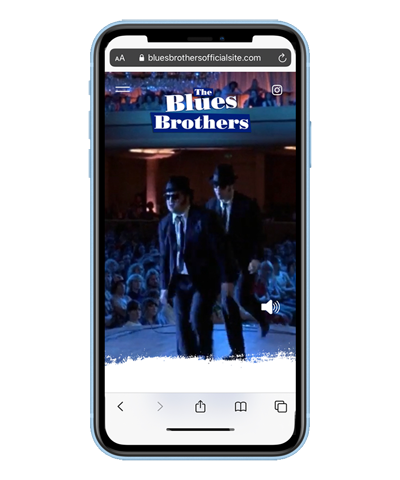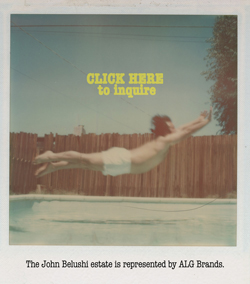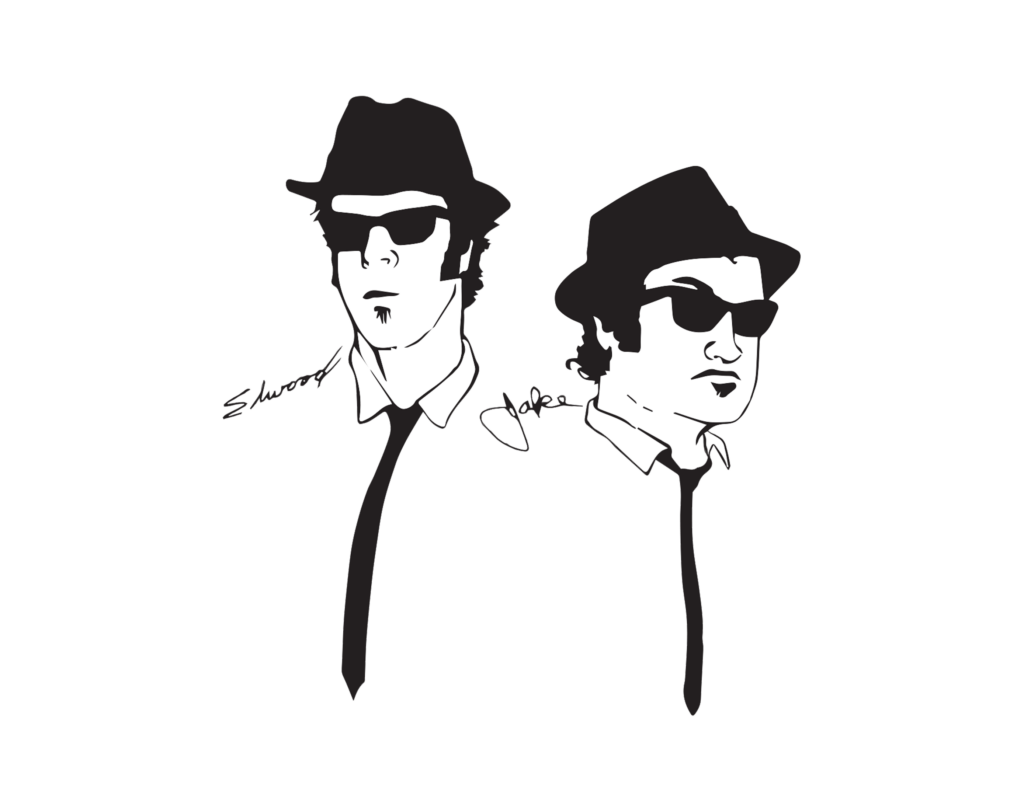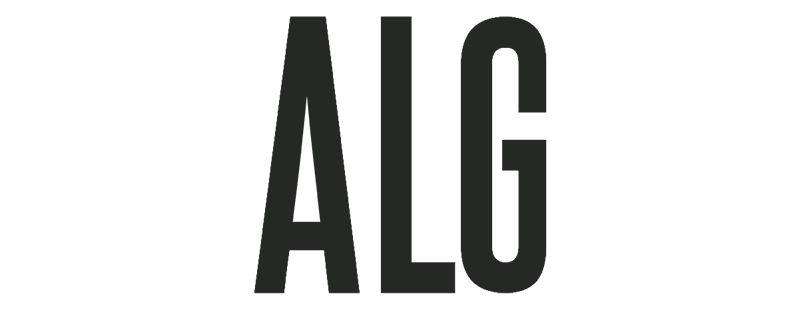On stage is the only place where I really know what I'm doing.
On stage is the only place where I really know what I'm doing.
ABOUT
John Belushi was born January 24, 1949. The son of Adam and Agnes Belushi, John has 3 siblings: Marian, Jim and Billy.
John graduated from Wheaton Central High School in Illinois in 1967. One of the "popular" kids, he was voted Homecoming King and named "Most Humorous." John was also the co-captain of the school football team. Checking in at 5' 9" tall and 170 lbs, he was an all-conference middle linebacker known to his teammates as "Killer Belushi." John also performed in a variety show, where he caught the eye of Judith Jacklin, who would become his high school sweetheart and future wife.
John turned down a football scholarship at Western Illinois and decided to attend Illinois Wesleyan. He wasn't accepted there and ended up at the University of Wisconsin-White Water. He stayed there for a year and in the Summer of '68 came back to Wheaton. In the fall he enrolled at the College of Dupage, which is a 2 year junior college. On January 5, 1970 he graduated with an associates of the arts degree in general studies.
John's father, Adam, came to America from Albania in 1934. He owned and operated two restaurants and intended to pass the family business to John, but he refused.
John had other things in mind...
In February of 1971, John went to Chicago to audition for The Second City comedy troupe, which featured shows that incorporated rehearsed skits followed by an improvisation hour. John got the job, and at just 22 years old, he was the youngest member in the group's history. Others soon realized that John could easily steal a scene. He played many different characters ranging from the mayor of Chicago to Hamlet.
As John would say as Hamlet:
"To be, to be. Sure beats the shit out of not to be."
By the fall of 1971, John's star was rising quickly. With his flawless impression of Joe Cocker, complete with Joe's unmistakable body movements and facial expressions, John was now appearing in the Second City shows six days a week and was the star of the show. When a former Troupe actor asked John how he was so completely relaxed on stage, John replied, "Because that is the only place I know what I am doing." In the Spring of 1972, after 14 months with Second City, it was time to move onto other things.
In October of 1972, Tony Hendra from National Lampoon Magazine came to see John at Second City. Tony had heard about Belushi's Cocker performance and was looking for more help for his Lemmings show. Lemmings was a parody show that spoofed popular musicians and about everything else. Tony was impressed, and he offered John a job with National Lampoon in New York, which John accepted.
While Lemmings continued to draw sell out crowds with John as the main attraction, he also began working with the National Lampoon Radio Hour.
It was during a visit to the Toronto chapter of the Second City Comedy Troupe that John met a very talented man named Dan Aykroyd, who would become his best friend. John offered Dan a job at National Lampoon which Dan was unable to accept due to prior commitments, but the two promised to keep in touch. They would go on to create entertainment history together.
On February 11, 1975, NBC gave Lorne Michaels a call. They were looking for a show to appeal to younger audiences to fill the 11:30 pm to 1:00 am slot – the difficult ratings, wasteland of late-night tv – on Saturday night. Michaels jumped at the shot with one caveat; the show must be broadcast live. NBC agreed and Lorne set out to assemble the show, including a cast that could handle the rigors and pressure of live television. Amongst the first cast members hired were Chevy Chase, Dan Aykroyd, Gilda Radner, and Garrett Morris. Lorne was subsequently urged to hire John, but was reluctant because he thought John was too much a renegade, and too opinionated. On his only interview with Lorne, John announced that he hated television and was only talking to Lorne because he heard this show would be different. Lorne was not impressed. And he certainly did not need an actor who thought of himself as a director. Regardless, John did manage to get an audition for the show.
John had been developing a Japanese samurai character whose basic communication was through expressive grunts and made-up (but enthusiastic!) Japanese. He would pull his hair into a man bun and don an old bathrobe, and to complete his character essentials, utilize a closet pole as a makeshift samurai sword. John showed up for the audition and quickly changed into full samurai garb. His appearance in the hallway garnered attention and the audition room quickly filled to capacity. For an unusually long time, John worked his magic. He was masterful at communicating non-verbally through a combination of expressions and vocal tones. He swaggered, cajoled and improvised situations ranging from shaving to cooking to playing pool. He threatened harakiri at the least slight. The room was enthralled with the performance; people – including Lorne, some say – were gut laughing. Tears streaming down the face belly laughing. Lorne had no choice but to hire the rebel.
On October 11, 1975, fifteen minutes before the start of the first show, John finally signed his contract with NBC. From studio 8H in NBC's Rockefeller Plaza, John was the only cast member to appear in the first-ever scene. Comedian George Carlin hosted the show in a 3-piece suit and T-shirt. Paranoid that Carlin would say something "not approved for TV," studio execs implemented a 6 second delay on the otherwise live broadcast. The new show was well received, with Chevy Chase garnering praise for his "Weekend Update" segment.
Although pleased with the first show, John not pleased with his minimal air time. The open had been his only good role. But there was no time to dwell on disappointments as work immediately began on the next show.
The subsequent week, host Paul Simon performed with his old partner, Art Garfunkel, in an historic reunion. John was happy with the high profile guests, but unhappy that the Not Ready for Prime Time Players were taking backseat to the guests, of which there were several. Aside from Simon and Garfunkel, Randy Newman and Phoebe Snow also each performed songs. To add to that, there were also two pre-recorded videos aired: one a lengthly Albert Brooks “short” and another in which Paul Simon played basketball with Hall of Famer Connie Hawkins. To add insult to injury, the only cast performance was a short scene in which they dressed as bees. This was a follow-up to a bee sketch from the first show, which had fallen flat at best. There wasn’t much to the scene, it largely played off the visual of dressing cast-members in a funny looking costume. John was upset. He considered it demeaning to have to wear a costume to get laughs, and bringing the bees on a second time was no better than the first. He believed the heart and foundation of the show would be the sketch comedy and he wanted a chance to prove it. He wanted writing with substance, and he let his opinion be known.
As is often the way at SNL, the behind the scenes intrigue of the personalities found its way into the show. On the third episode, hosted by Rob Reiner, the bees made another appearance. In this version, Reiner gets upset because the bees are ruining his scene. While the cast stands by dejectedly, John steps up and defends them. “We’re sorry, Mr. Reiner... but you see, you’ve got Norman Lear and a first rate writing staff - but this is all they came up with for us.” After a “sad clown” apology, John withdraws himself, but after a moment’s reconsideration, comes back to tell Reiner off. “You think we like this?... We’re just like you were 5 years ago, Mr. Hollywood California number-one-show big shot!...” The thing that no one could have predicted was the way John maneuvered the bee antenna as he spoke, only adding to the visual silliness. Rob Reiner’s subtle but humored reaction to the antenna was also priceless. After a short but thorough dressing down, John triumphantly and proudly leads the bees off stage. The audience roared with laughter and whether John liked it or not, he had just cemented the bees as the first SNL characters of note.
The third show also gave John another opportunity to deliver his own brand of humor. Thanks to a request from the host, who had seen John perform in Lemmings, John debuted his Joe Cocker impression. Mimicking Cocker’s gravely vocal stylings and erratic body language, John twisted and contorted his body in ways never seen before; he spun and fell to the floor, emptied a beer down his throat, spit it several feet in the air, then unexplainably turned into a human see-saw as he struggled to stand up. As many times as Lorne had seen this in rehearsals he was still floored by the performance. To say the least, John nailed it!
John's Samurai skit debuted on December 13, 1975, with a little help from Richard Pryor. The two appeared as dueling samurai, and the character immediately became an audience favorite. John would go on to play many hilarious characters from Beethoven to the Greek restaurant owner to Star Trek’s Captain Kirk.
As the show progressed, John and Dan’s friendship grew and soon they were best friends and partners. With the idea of the Blues Brothers brewing in the back of their minds, they felt it was time they introduced music into the mix. They came up with an idea that would give them the opportunity to play and sing and blow the bees out of the water.
On January 17, 1976, John and Dan again donned the bee costumes, but this time, with an attitude: John wore a pair of yellow aviator glasses and sassily chewed gum while Dan added a pork pie hats and sunglasses to his accoutrements. With The SNL All Bee Band backing them, including Danny on harp, John grabbed the mike and sang those now famous words, "I'm a king bee, babe, want you to be my queen...”
A little over two years later, on April 22, 1978, Jake and Elwood were introduced as the musical guest by soon-to-be Blues Brothers Band leader Paul Shaffer, with this fictional history: "In 1969, Marshal Checker of the legendary Checker's Records, called me on a new blues act that had been playing in the small, funky clubs on Chicago's South Side...Today...they are no longer an authentic blues act, but have managed to become a viable commercial product. Let's join Joliet Jake and his silent brother Elwood – the Blues Brothers." John and Dan took on the characters of Jake and Elwood Blues and performed "Hey Bartender" and “Sweet Home Chicago” The Blues Brothers were born.
John remained a part of SNL until September of 1979. After four seasons and 87 shows, both he and Aykroyd decided that they were ready to move on to other things, which just happened to be the Blues Brothers movie.
In the summer of 1977, a young director named John Landis first met Belushi. Landis had just finished up his first film, The Kentucky Fried Movie, a low-budget satire of other films and TV. Landis wanted John to play the part of Bluto Blutarsky in National Lampoon's Animal House, and he had already sent John a script.
The movie was about a naughtyboy fraternity, the Delta "Animal House," which had waged a war against taste, sobriety, society, grades, the dean, women, and just about everything else! Universal Studios had issued Landis an ultimatum: Get Belushi to play Bluto or there would be no movie.
John agreed to do the movie and signed a contract for $35,000, not bad considering he had no real film experience. There was originally a part for John's bud, Dan Aykroyd, to play "D-Day", a motorcycle-riding fanatic, and John really wanted him to take that role.
But while waiting for filming to begin, John signed a contract to do Goin' South, directed by and starring Jack Nicholson.
John Landis set out to find a college campus to begin filming, since they couldn't afford an expensive Hollywood set. After over 50 colleges had turned them down, The University of Oregon at Eugene finally gave them permission. To stay within budget, they had just 30 days to finish on-location shooting, which meant 6 day work weeks for the cast and crew.
Landis wanted John to use his facial expressions to full effect; he even cut lines from John so that he would have to rely upon his physical comedy even more. Landis quickly realized that when John entered a scene he took it over, and he began adjusting the movie around Bluto's exits and entrances. John played the role of Bluto to perfection, and Animal House was about to launch John into superstardom.
The movie premiered on July 28, 1978, and went on to become the highest grossing comedy of its time. That year, John had a #1 movie, a #1 TV show, and a #1 record with Briefcase Full of Blues from the Blues Brothers.
Dan and John spent one afternoon on the beach talking and the subject of their deaths came up. It was one of those conversations that good friends have sometimes. They were listening to a song by the Ventures called, "The 2000 Pound Bee." The song was full of hard sounding guitars and it was the kind of music that was popular in the 60s, with just a touch of punk.
Aykroyd had one favor to ask of John: "You got to promise me something," Aykroyd said. "If I die before you do, you have to play this tape at my funeral....because it's..." Dan laughs..."Wouldn't it be great to lay this noisy, heavy tape on a church full of people!"
"Sure," John replied, "and you do the same for me." He was serious.
"Absolutely," Aykroyd promised. "Absolutely."
John loved the night life. He loved to party, to be wild, and to make people laugh. The late 1970s and early 1980s was filled with drug use in Hollywood. Drugs were everywhere you looked. The producers, the directors, and the other actors all seemed to be using them. John was no exception.
March 5, 1982.
It was just another night for John; he was in Bungalow #3 at the Chateau Marmont with some friends working on a movie script when he decided he wanted something to take him further than he had ever been before. Later that night, Cathy Smith injected him with a speed ball, and the mixing of heroin and cocaine had a cumulative effect on John's brain, slowing down his breathing and finally causing complete respiratory failure.
On Tuesday, March 9, 1982, John was buried in Abel's Hill Cemetery on Martha's Vineyard. Dan Aykroyd, wearing a black leather jacket and black jeans, led the funeral procession to the cemetery on his motorcycle. As the snow began to fall, James Taylor sang "That Lonesome Road."
On March 11, 1982, about 1,000 of John's family and friends attended a memorial service in New York at the Cathedral of Saint John Divine. As promised, Aykroyd took out a tape player, held it to the microphone and played "The 2000 Pound Bee."
The mourners were stunned at first, but then began to laugh.
FILMOGRAPHY
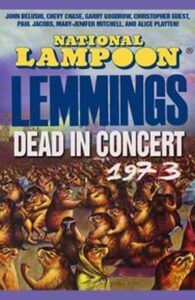
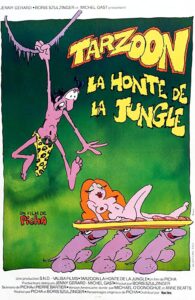
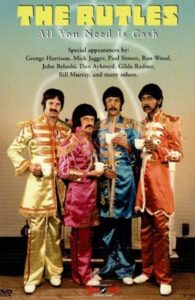
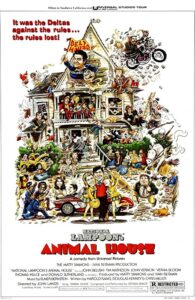
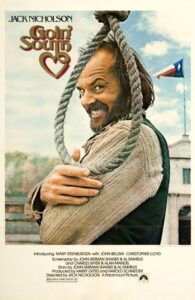
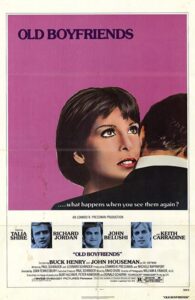

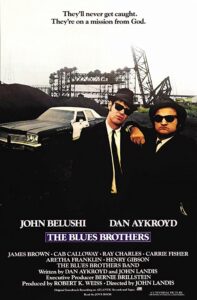
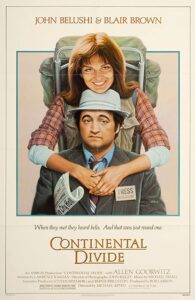
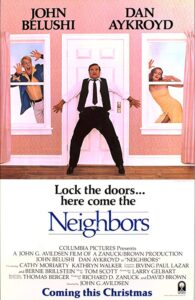
PHOTO GALLERY
CLIPS
CLIPS
Foooooooood Fight!
Mission from God.
Cheeburger! Cheeburger!


WEST HEAVEN
A tribute to John
Terms & Conditions | Privacy Policy
